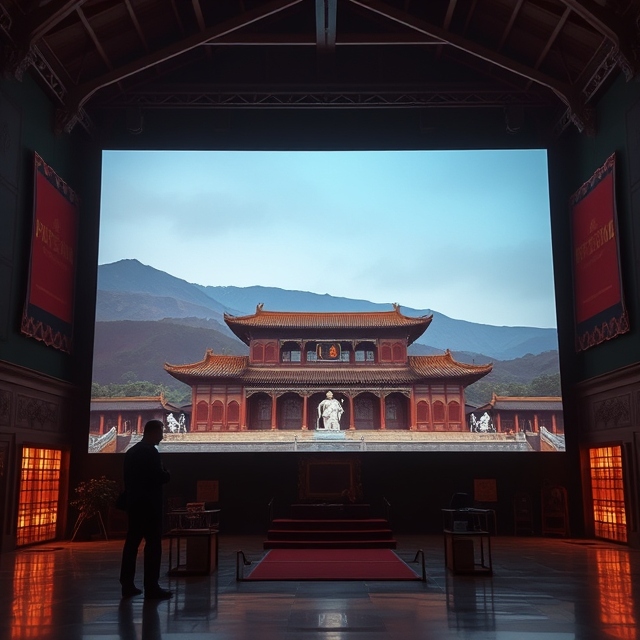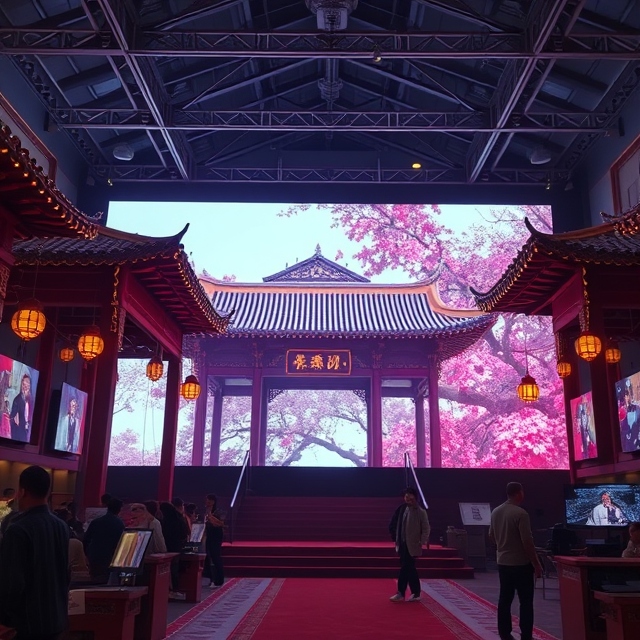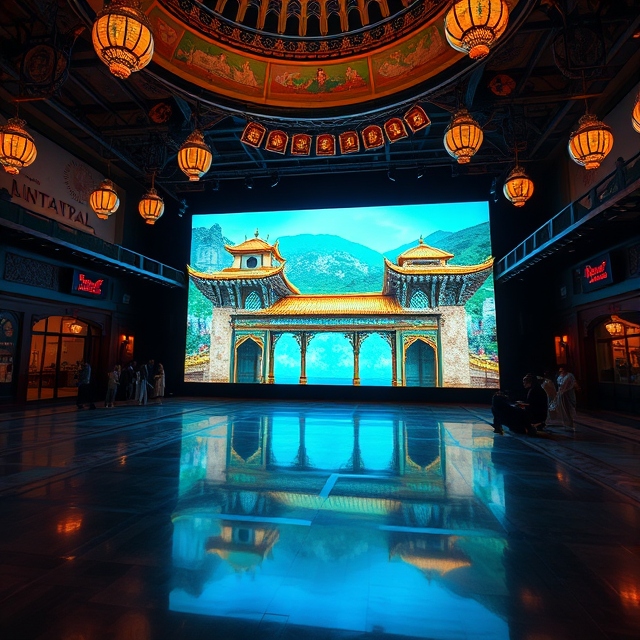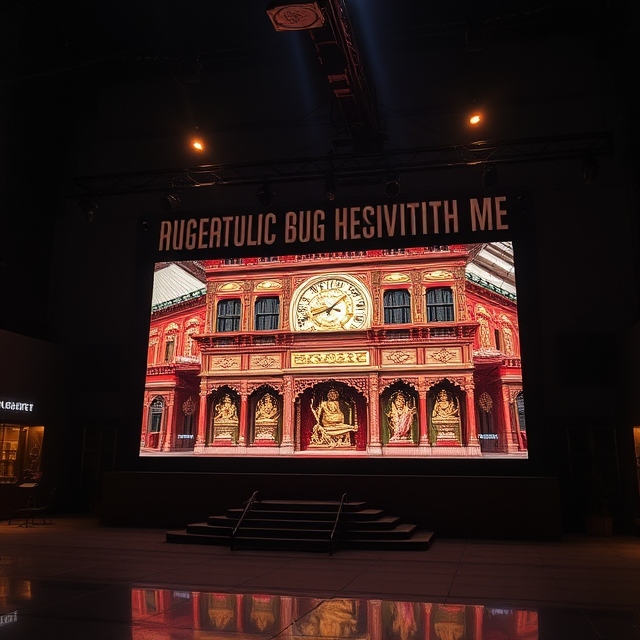- Home
- About Us
- Industries
- Agritech & Smart Farming
- Aquariums & Zoos
- Art & Cultural Exhibitions
- Automotive & Transportation
- Broadcasting & News
- Construction & Real Estate
- Corporate & Offices
- Cultural Heritage & Preservation
- Cybersecurity Operations
- Digital Content Creation & Media
- E-commerce & Online Retail
- Education
- Energy & Utilities
- Entertainment & Media
- Entertainment Arcades & Amusement
- Environmental Monitoring
- Event Management & Conferences
- Fashion & Apparel Retail
- Fashion Retail & E-commerce
- Finance & Banking
- Financial Trading & Stock Exchanges
- Fitness & Wellness
- Food & Beverage
- Food Processing & Manufacturing
- Gaming, Casinos, & Hospitality
- Government & Public Spaces
- Healthcare
- Hospitality & Event Venues
- Insurance
- Legal & Judicial
- Libraries & Community Centers
- Logistics & Supply Chain
- Luxury Cruise & Maritime
- Manufacturing & Industrial
- Meteorology & Climate Research
- Military & Defense
- Mining & Extraction
- Museums & Cultural Centers
- Non-Profit Organizations
- Oil & Gas Industry
- Professional Training & Development
- Public Health & Awareness
- Public Parks & Recreation Areas
- Public Safety & Law Enforcement
- Public Transportation
- Rehabilitation Centers
- Religious & Worship Spaces
- Renewable Energy
- Retail & Shopping Malls
- Retail Banking
- Security & Surveillance
- Social Media & Digital Marketing
- Sports & Stadiums
- Smart Cities & Urban Planning
- Supply Chain & Inventory
- Television & Film Production
- Travel & Hospitality
- FAQ
- Contact Us
- Home
- About Us
- Industries
- Agritech & Smart Farming
- Aquariums & Zoos
- Art & Cultural Exhibitions
- Automotive & Transportation
- Broadcasting & News
- Construction & Real Estate
- Corporate & Offices
- Cultural Heritage & Preservation
- Cybersecurity Operations
- Digital Content Creation & Media
- E-commerce & Online Retail
- Education
- Energy & Utilities
- Entertainment & Media
- Entertainment Arcades & Amusement
- Environmental Monitoring
- Event Management & Conferences
- Fashion & Apparel Retail
- Fashion Retail & E-commerce
- Finance & Banking
- Financial Trading & Stock Exchanges
- Fitness & Wellness
- Food & Beverage
- Food Processing & Manufacturing
- Gaming, Casinos, & Hospitality
- Government & Public Spaces
- Healthcare
- Hospitality & Event Venues
- Insurance
- Legal & Judicial
- Libraries & Community Centers
- Logistics & Supply Chain
- Luxury Cruise & Maritime
- Manufacturing & Industrial
- Meteorology & Climate Research
- Military & Defense
- Mining & Extraction
- Museums & Cultural Centers
- Non-Profit Organizations
- Oil & Gas Industry
- Professional Training & Development
- Public Health & Awareness
- Public Parks & Recreation Areas
- Public Safety & Law Enforcement
- Public Transportation
- Rehabilitation Centers
- Religious & Worship Spaces
- Renewable Energy
- Retail & Shopping Malls
- Retail Banking
- Security & Surveillance
- Social Media & Digital Marketing
- Sports & Stadiums
- Smart Cities & Urban Planning
- Supply Chain & Inventory
- Television & Film Production
- Travel & Hospitality
- FAQ
- Contact Us

Cultural Heritage & Preservation
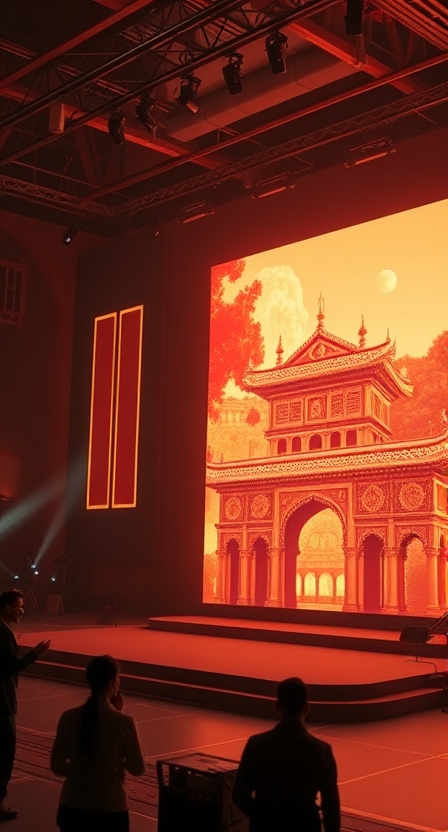
Uses Of Led Display For Cultural Heritage & Preservation
Active LED displays are playing a transformative role in cultural heritage and preservation by enhancing the way historical information, art, and artifacts are showcased to the public. Museums, galleries, cultural centers, and heritage sites are leveraging these displays to create more immersive, interactive, and educational experiences for visitors. LED displays offer innovative ways to preserve and present cultural history while ensuring it remains accessible to diverse audiences.
Advantages of Active LED Displays in Cultural Heritage and Preservation:
- Dynamic Storytelling: LED displays allow for the use of multimedia (videos, animations, digital recreations) to tell complex historical and cultural stories in an engaging manner.
- Immersive Experiences: Interactive LED displays can transport visitors into historical settings or showcase virtual artifacts, providing a deeper understanding of cultural contexts.
- Energy Efficiency: LED technology uses less power, making it an eco-friendly and sustainable option for long-term installation in museums and heritage sites.
- Space-Saving: Active LED displays can be tailored to fit various spaces, from large exhibition halls to smaller, intimate settings, without taking up much physical space.
- Long Lifespan: LEDs are durable and resistant to wear, ensuring they continue to operate effectively over long periods, making them ideal for heritage institutions.
Applications in Cultural Heritage and Preservation:
- Interactive Exhibits and Virtual Tours
- Purpose: To engage visitors with historical sites and artifacts.
- Content Ideas: Use LED screens to provide interactive exhibits, allowing visitors to explore historical sites, view virtual reconstructions of ancient cities, or see digital representations of artifacts. Interactive displays can offer detailed information, zoom capabilities, or virtual tours of places that are difficult to visit physically, such as archaeological sites or underwater ruins.
- Historical Documentaries and Educational Videos
- Purpose: To provide historical context and educate visitors.
- Content Ideas: Display documentaries, interviews with experts, or educational videos that explore the history, cultural significance, and preservation efforts of artifacts or sites. These videos can provide deeper insights into the heritage being showcased, enriching the visitor’s experience.
- Augmented Reality (AR) and Virtual Reality (VR) Integration
- Purpose: To create immersive cultural experiences.
- Content Ideas: Integrate AR or VR experiences with LED displays to allow visitors to interact with historical figures, experience past events, or “touch” digital artifacts. For example, a VR headset could immerse visitors in a reimagined historical scene, while an LED screen provides additional contextual information or interactive features.
- Artifacts and Digital Preservation
- Purpose: To digitally preserve and showcase fragile or damaged items.
- Content Ideas: Display high-resolution images or 3D scans of rare and delicate artifacts, allowing them to be viewed without risking physical harm. This can include sculptures, ancient manuscripts, or textiles that are too fragile for physical handling or exhibition.
- Cultural Art Installations
- Purpose: To present art and cultural expressions in a contemporary format.
- Content Ideas: Use LED displays to create digital art installations that feature cultural heritage themes, such as projections of indigenous art, historical motifs, or contemporary reinterpretations of traditional works. These installations can be shown in galleries, public spaces, or at cultural festivals, giving audiences a fresh perspective on heritage.
- Real-Time Historical Data and Timelines
- Purpose: To showcase the historical timeline of cultures or events.
- Content Ideas: Use LED displays to show interactive timelines of significant historical events, cultural movements, or milestones of a particular heritage or civilization. Visitors can touch the display to explore events in more detail, providing a deeper understanding of the cultural context and its evolution over time.
- Language and Translation Support
- Purpose: To make exhibits accessible to a global audience.
- Content Ideas: Display multilingual text and translations of artifacts, labels, and information in different languages to accommodate international visitors. Active LED displays can easily switch between languages, ensuring that cultural heritage is accessible to a wider audience.
- Cultural Heritage Preservation Awareness
- Purpose: To educate the public about the importance of preserving cultural heritage.
- Content Ideas: Display interactive content that raises awareness about conservation efforts, endangered cultural practices, or preservation challenges. Visitors can learn about the ongoing work to protect and preserve cultural sites, artifacts, and traditions around the world.
- Temporary Exhibitions and Traveling Shows
- Purpose: To facilitate the touring of cultural heritage exhibits.
- Content Ideas: Use LED displays for temporary or traveling exhibitions, as they are portable and flexible. These displays can be set up in various locations to showcase historical and cultural information, artifacts, and multimedia content in different settings, allowing a broader audience to experience the exhibition.
- Interactive Public Displays and Outdoor Installations
- Purpose: To engage the public in public spaces or open-air heritage sites.
- Content Ideas: Install large LED displays in public spaces, parks, or outdoor museums, where they can show historical narratives, local traditions, or important cultural events. These displays can also be interactive, allowing the public to engage with the content, such as by submitting questions or comments about the displayed material.
Features
- List Item
- List Item
- List Item
- List Item
Advantages
- List Item
- List Item
- List Item
- List Item
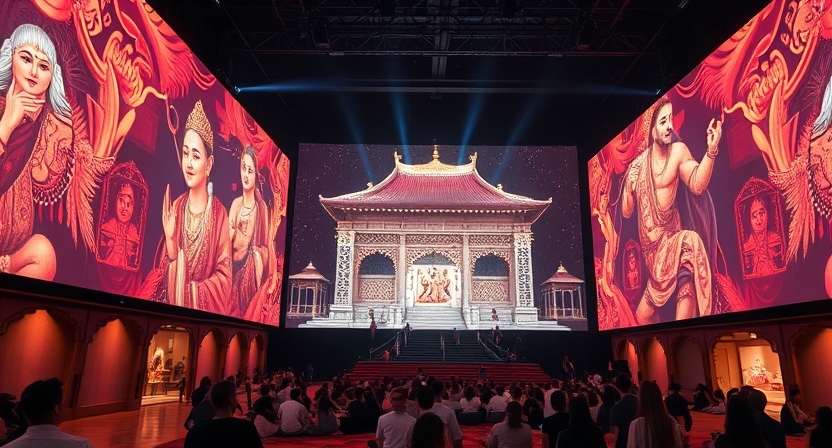
Placement Tips:
- Exhibition Halls and Galleries: Place large LED screens in key exhibit areas to display digital reconstructions, virtual tours, or multimedia documentaries. Screens should be positioned where they complement the artifacts or installations without overcrowding the space.
- Entrance and Lobby Areas: Use LED displays near the entrance to introduce visitors to the theme of the exhibition or provide an overview of the history and significance of the heritage being showcased.
- Outdoor Heritage Sites: For outdoor cultural heritage sites, use weather-resistant LED displays to provide contextual information, historical background, or interactive content. This is especially useful for sites where physical signage might be challenging due to environmental factors.
- Interactive Zones: Set up designated interactive zones with LED displays where visitors can engage with multimedia content, access digital archives, or interact with digital versions of historical figures or artifacts.
- Temporary or Traveling Exhibits: Use smaller, portable LED displays that can be easily set up for traveling exhibitions or temporary installations. These displays can be moved to different locations, offering flexibility and reach for cultural programming.
Key Benefits in Cultural Heritage and Preservation:
- Enhanced Engagement: Interactive and immersive LED displays captivate visitors, offering them an engaging and memorable experience with cultural artifacts and history.
- Wider Audience Reach: By incorporating multilingual content and virtual tours, cultural heritage can be shared with a global audience, overcoming language and geographic barriers.
- Preservation of Fragile Artifacts: LED displays allow for the digital preservation of fragile artifacts, reducing the physical handling of objects and ensuring that they are protected for future generations.
- Educational Value: Through the use of videos, virtual tours, and interactive timelines, LED displays educate visitors about the significance and context of cultural heritage in an accessible and informative way.
- Increased Accessibility: LED displays make cultural heritage more accessible to people with different abilities, offering features like text-to-speech, multilingual options, and easily readable visuals.
Conclusion
Active LED displays offer museums, galleries, and heritage sites an innovative way to engage visitors, preserve cultural artifacts, and enhance educational programming. By integrating multimedia, interactive elements, and real-time data, these displays create immersive, impactful experiences that connect people with history, culture, and the importance of preservation.
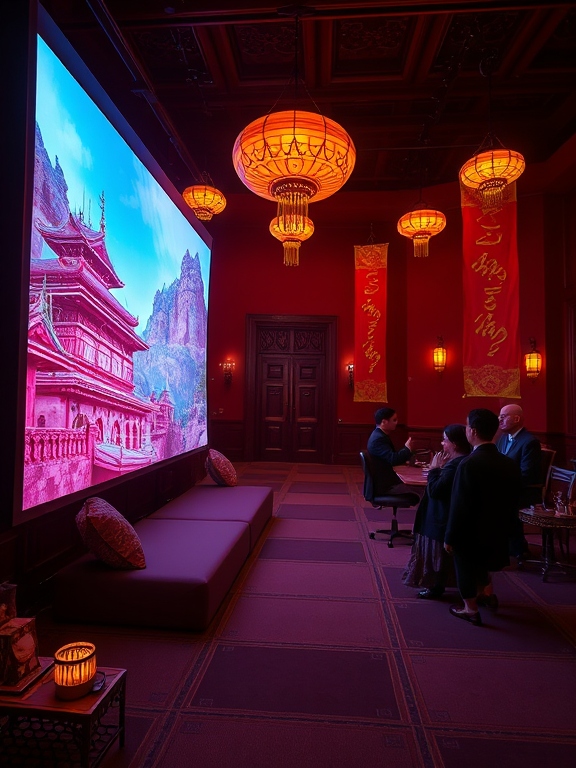
illuminits LED Walls?
Technology
There are three primary LED video wall technologies: ultra-narrow bezel LCD, rear-projection cubes, and direct-view LED displays. Ultra-narrow bezel LCD is the most cost-effective option.
Size
The great thing about illuminits video walls is that they are modular, so you can get them in any size or aspect ratio you want.
Support
The heavier the video wall system becomes, the more panels there are. This puts additional strain on the infrastructure that supports it. illuinits offers the best in-time assistance.
Service
Even high-definition video walls can have problems. This can be a minor or major issue. As a result, Aero provides a variety of comprehensive service packages that ensure minimal downtime at a low cost. Types Of LED Displays
